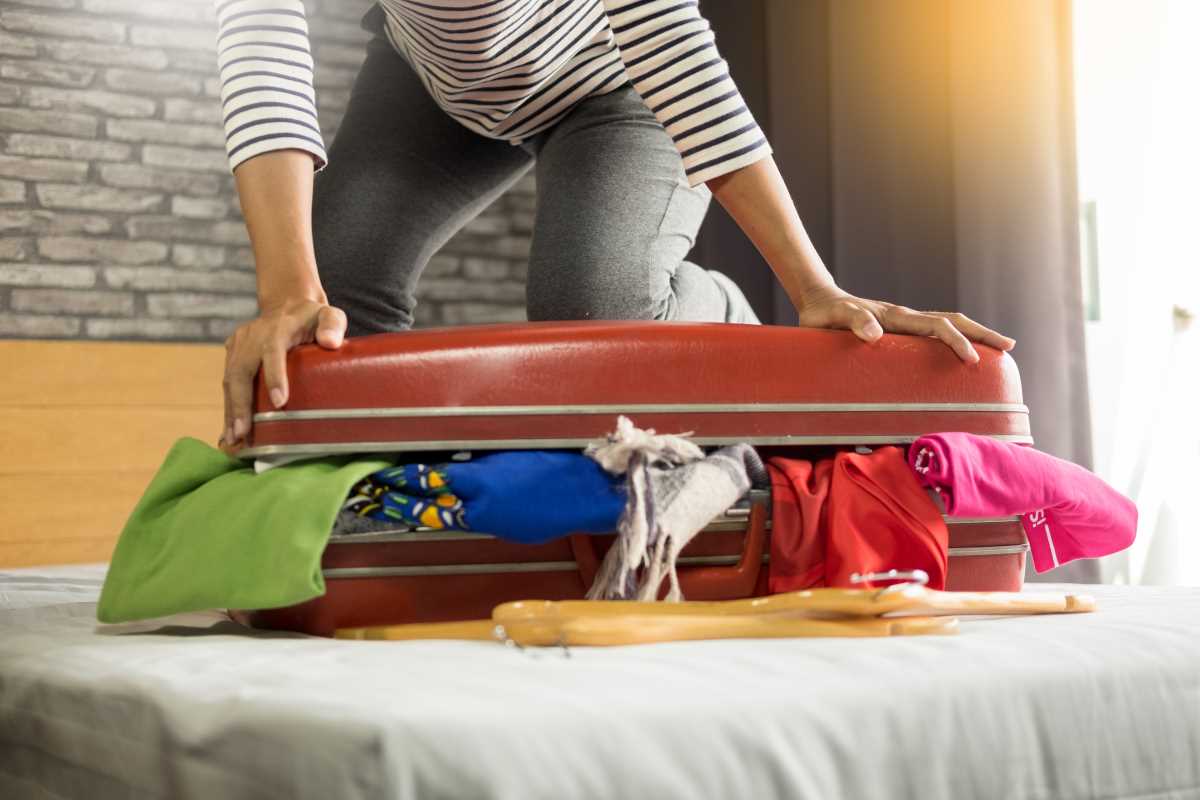Packing for unpredictable weather is a bit like planning a party for someone who loves surprises—you’ve got to be ready for anything without going overboard. One moment, it’s sunny and warm; the next, you’re wishing you’d brought a raincoat. Overpacking is tempting, but lugging around a heavy suitcase is nobody’s idea of a good time. The secret lies in strategic packing: choosing versatile pieces, layering smartly, and knowing what you can skip entirely. If you’ve ever stared at a suitcase, paralyzed by the thought of sudden downpours or heatwaves, don’t worry—I’ve got your packing strategy covered.
Embrace the Art of Layering
Layers are your best friends when the weather is unpredictable. Instead of packing bulky sweaters or heavy coats, focus on lightweight layers you can mix and match. A long-sleeve shirt over a tank top, topped with a cardigan or jacket, offers warmth when it’s chilly and can easily be peeled off when the sun appears.
Opt for lightweight, breathable, and quick-drying materials like merino wool or synthetic blends. A thin base layer can provide surprising warmth without the bulk, and it can also double as a stand-alone piece for warmer days.
Choose Versatile Outerwear
The right jacket can make or break your packing game. Look for something lightweight, waterproof, and packable. A rain jacket with a removable lining or an insulated windbreaker can handle a range of temperatures without hogging valuable suitcase space.
Neutral colors like black, navy, or gray are ideal—they pair well with everything and hide dirt better than lighter shades. Bonus points if your jacket has a hood, so you can skip packing an umbrella (trust me, umbrellas are suitcase hogs).
Pack Multi-Use Items
When space is limited, every item in your bag should pull double duty. A scarf, for example, can keep you warm on a chilly evening, double as a picnic blanket, or even serve as a makeshift pillow on a long flight.
Shoes are another area where versatility matters. A sturdy pair of waterproof sneakers can handle light hiking, city strolling, and rainy weather. Pair them with foldable flats or sandals for dressier occasions, and you’ve covered all your bases without packing a footwear army.
Prioritize Quick-Drying Fabrics
Nothing dampens a trip faster than wet clothes that take forever to dry. When packing for unpredictable weather, choose fabrics that wick moisture, dry quickly, and resist wrinkles. Think polyester, nylon, or merino wool over cotton, which holds onto moisture like it’s planning to start a collection.
If you do get caught in the rain, quick-drying clothes will get you back to dry and comfortable in no time—without waiting hours (or days) for things to dry in a humid hotel room.
Limit Your Shoes
Shoes are the heaviest, bulkiest items in your suitcase, so limit yourself to two or three pairs. A good rule of thumb: one pair for walking, one for weather-specific needs, and one for versatility or dressier occasions.
For example, waterproof sneakers are great for exploring cities or tackling light rain, while packable ballet flats or sandals work for evenings or warm days. If you’re expecting serious rain or snow, consider lightweight, packable boots—they’ve come a long way from the clunky, space-eating styles of yesteryear.
Don’t Underestimate Accessories
When the weather is unpredictable, accessories can be a game-changer. A compact travel umbrella, a foldable sun hat, or a pair of gloves can make all the difference without taking up much room.
Also, consider packing a buff or lightweight neck gaiter. It’s small but mighty—great for keeping you warm, protecting your neck from the sun, or even functioning as a face covering if needed.
Use Packing Cubes to Stay Organized
Packing cubes aren’t just for neat freaks—they’re lifesavers when dealing with unpredictable weather. Use one cube for warm-weather gear, another for cold-weather layers, and a third for accessories. This way, you can easily grab what you need without rummaging through your entire suitcase.
Plus, packing cubes compress your clothes slightly, giving you extra room for " just-in-case " items like a lightweight rain jacket or a pair of warm socks.
Be Realistic About “What-If” Scenarios
Packaging for every possible weather scenario is tempting, but let’s be real—you probably won’t need that heavy sweater, the extra raincoat, and the sunhat. Check the weather forecast before you leave and pack accordingly, allowing for slight variations.
If you’re truly worried about unexpected conditions, consider what you can buy or borrow at your destination. Most places have stores where you can pick up an extra layer or an umbrella if needed.
Roll Your Clothes to Maximize Space
Rolling your clothes instead of folding them saves space and minimizes wrinkles. This trick is especially handy when packing bulky items like jackets or jeans. Use the extra room you save for small essentials like travel-sized laundry detergent or an extra pair of socks—because nobody likes cold, wet feet.
Test Your Packing Strategy
If you’re nervous about packing light for unpredictable weather, do a trial run before your trip. Lay out your planned outfits and ensure they cover various temperatures and conditions. Try mixing and matching to ensure versatility.
By the time you zip up your suitcase, you’ll feel confident knowing you’re prepared for anything Mother Nature throws your way—without lugging around a bag the size of a small car. Who says you can’t be prepared and travel light?







